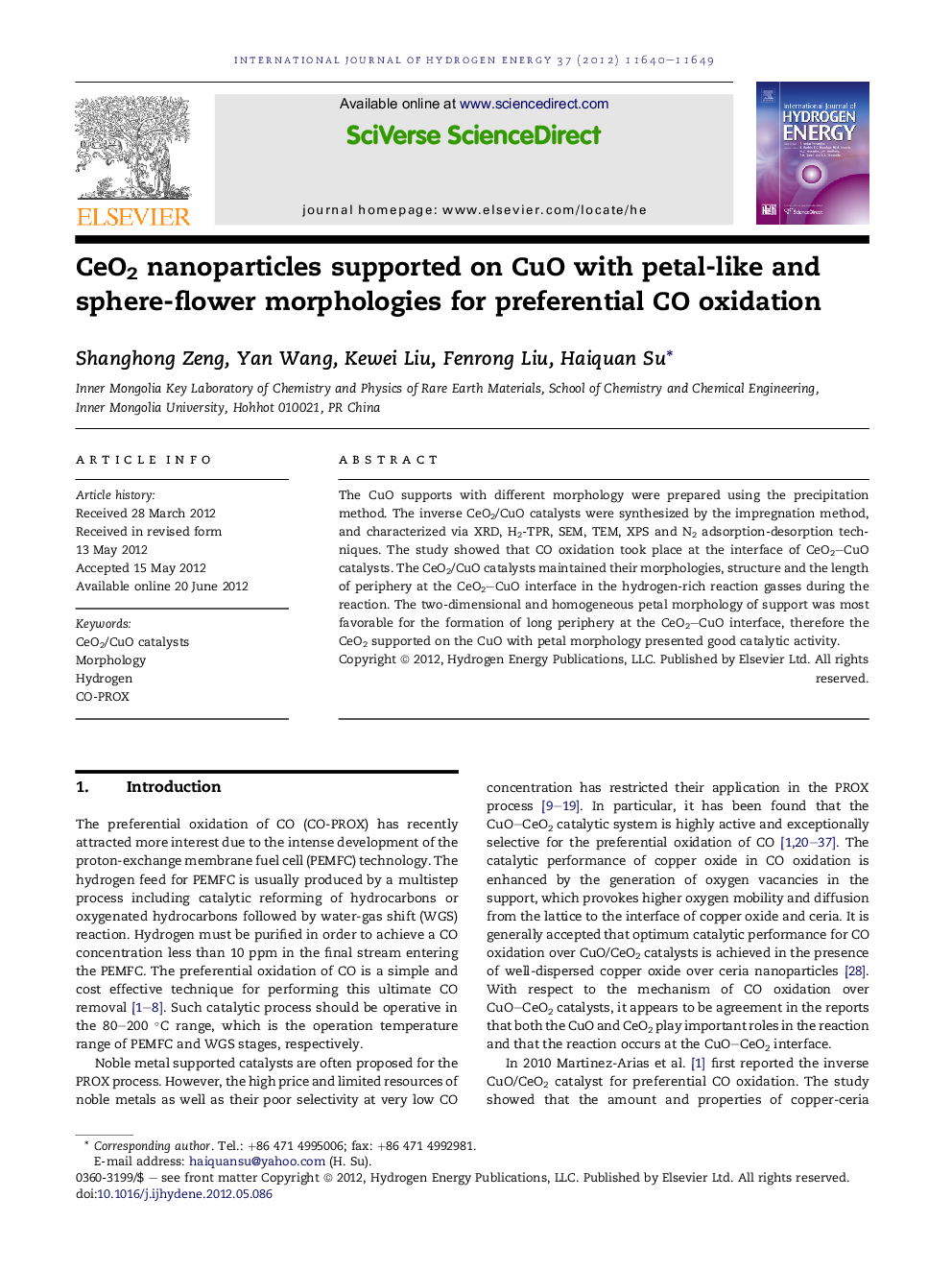| کد مقاله | کد نشریه | سال انتشار | مقاله انگلیسی | نسخه تمام متن |
|---|---|---|---|---|
| 1275032 | 1497553 | 2012 | 10 صفحه PDF | دانلود رایگان |

The CuO supports with different morphology were prepared using the precipitation method. The inverse CeO2/CuO catalysts were synthesized by the impregnation method, and characterized via XRD, H2-TPR, SEM, TEM, XPS and N2 adsorption-desorption techniques. The study showed that CO oxidation took place at the interface of CeO2–CuO catalysts. The CeO2/CuO catalysts maintained their morphologies, structure and the length of periphery at the CeO2–CuO interface in the hydrogen-rich reaction gasses during the reaction. The two-dimensional and homogeneous petal morphology of support was most favorable for the formation of long periphery at the CeO2–CuO interface, therefore the CeO2 supported on the CuO with petal morphology presented good catalytic activity.
The CuO presented 3D sphere-flower and two-dimensional petal morphology with the change of PEG content, respectively. The CeO2/CuO catalysts after loading CeO2 maintained their morphologies, structure and the length of periphery at the CeO2–CuO interface in the hydrogen-rich reaction gases during the reaction.Figure optionsDownload as PowerPoint slideHighlights
► CuO with petal-like and sphere-flower morphologies as catalyst supports.
► Inverse CeO2/CuO catalysts for preferential CO oxidation.
► CeO2 and CuO kept morphology, structure and length of periphery during reaction.
► Petal morphology of support was most favorable for formation of long periphery.
► CeO2 supported on CuO with petal morphology presented good catalytic activity.
Journal: International Journal of Hydrogen Energy - Volume 37, Issue 16, August 2012, Pages 11640–11649